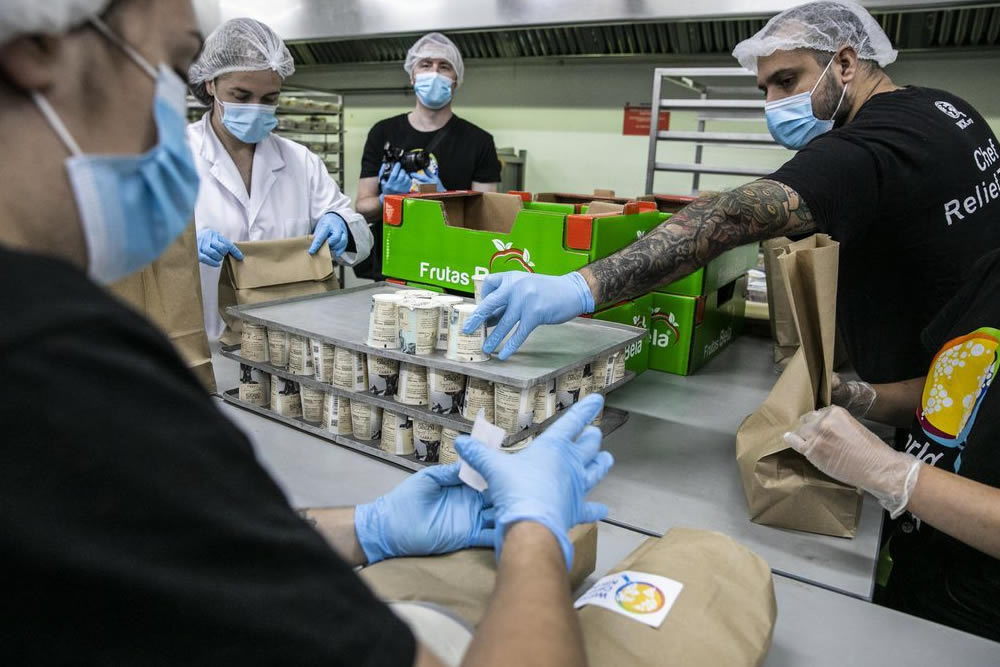Guardemos y conservemos bien
El almacenaje y la conservación correcta de los alimentos evitan la pérdida de sus propiedades nutricionales, reducen la posibilidad de que se estropeen y ayudan a reducir el riesgo de intoxicaciones a la hora de consumirlos.
Podemos guardar los alimentos en la nevera, el congelador, la despensa o, incluso, hacer conservas y alargar la duración antes no se estropeen.

Llenemos la nevera
Las neveras nos permiten refrigerar y conservar los alimentos de manera muy sencilla y útil, pero hay que organizar correctamente los alimentos para evitar que se estropeen. Con acciones tan simples como colocar cada producto en el estante de la nevera que esté a la temperatura más adecuada para su conservación, no mezclar alimentos crudos con los guisados y guardarlos en recipientes bien cerrados, podremos alargar la vida de los alimentos.
- Ajustemos la temperatura a 5 ºC, teniendo en cuenta que la temperatura varía ligeramente en función del estante donde coloquemos los alimentos.
- Coloquemos correctamente los alimentos de manera que no estén en contacto con las paredes y permitan una buena ventilación.
- Revisemos qué alimentos tenemos en la nevera, cuáles hemos empezado y las fechas de caducidad para colocarlos más a mano y consumirlos antes.
- Guardemos los alimentos dentro de recipientes herméticos o bien envasados correctamente para evitar que se sequen y generen malos olores en el interior de la nevera.
Llenemos el congelador
Guardar los alimentos crudos o guisados en el congelador es una buena estrategia para evitar que se nos estropeen si no prevemos consumirlos en un periodo breve de tiempo.
Hay que tener en cuenta que, si ya hemos descongelado un alimento, no lo podemos volver a congelar. Para evitar que nos pase eso, podemos guardar los alimentos en porciones individuales. Así podremos descongelar solo la cantidad que realmente consumiremos.
- Comprobemos que la temperatura sea de -18 ºC, que es la óptima para garantizar la conservación de los alimentos.
- Guardemos los productos frescos en recipientes herméticos o bolsas especiales para la congelación a fin de evitar que se estropeen.
- Congelemos aquellos alimentos que no consumiremos de inmediato, asegurándonos previamente de eliminar aquellas partes no comestibles.
- Congelemos platos preparados que nos han sobrado de alguna comida. Tengamos en cuenta que se deben dejar enfriar a temperatura ambiente –evitando sobrepasar las 2 horas– y guardar en un recipiente poco profundo y bien cerrado.
Llenemos la despensa
Almacenar correctamente los productos de vida larga nos permite disponer de alimentos para cocinar en cualquier momento.
- Consultemos las etiquetas para asegurarnos de que el producto es de vida larga y no necesita frío.
- Coloquemos a mano los alimentos que ya teníamos en la despensa o que tienen una fecha de consumo preferente próxima.
- Comprobemos que la despensa es un espacio fresco y sin humedad.
Hagamos conservas caseras
La elaboración de conservas caseras es una buena manera de alargar la vida de los alimentos y evitar que se estropeen. Se trata de una actividad tradicional que se ha ido desarrollando desde que el ser humano empezó a almacenar alimentos para hacer frente a posibles épocas de escasez y que nos permite consumir alimentos fuera de temporada.
A la hora de hacer conservas en casa, debemos tener en cuenta algunos aspectos para evitar que la comida se estropee y garantizar que cuando consumamos el alimento meses más tarde mantenga la calidad.
- Escojamos alimentos que estén en buen estado y que no preveamos consumir en breve.
- Limpiemos bien los utensilios de cocina y la superficie sobre la cual manipularemos el alimento.
- Esterilicemos el envase, preferiblemente de vidrio, donde guardaremos el producto.
- Aseguremos el aislamiento del envase. Llenémoslo con el alimento muy caliente, cerrémoslo bien y dejémoslo boca abajo unos minutos. Haremos el vacío y comprobaremos que no se producen pérdidas.
- Hirvamos la conserva al baño María, en el caso de las mermeladas, o en una olla a presión, en el caso del resto de las conservas.
